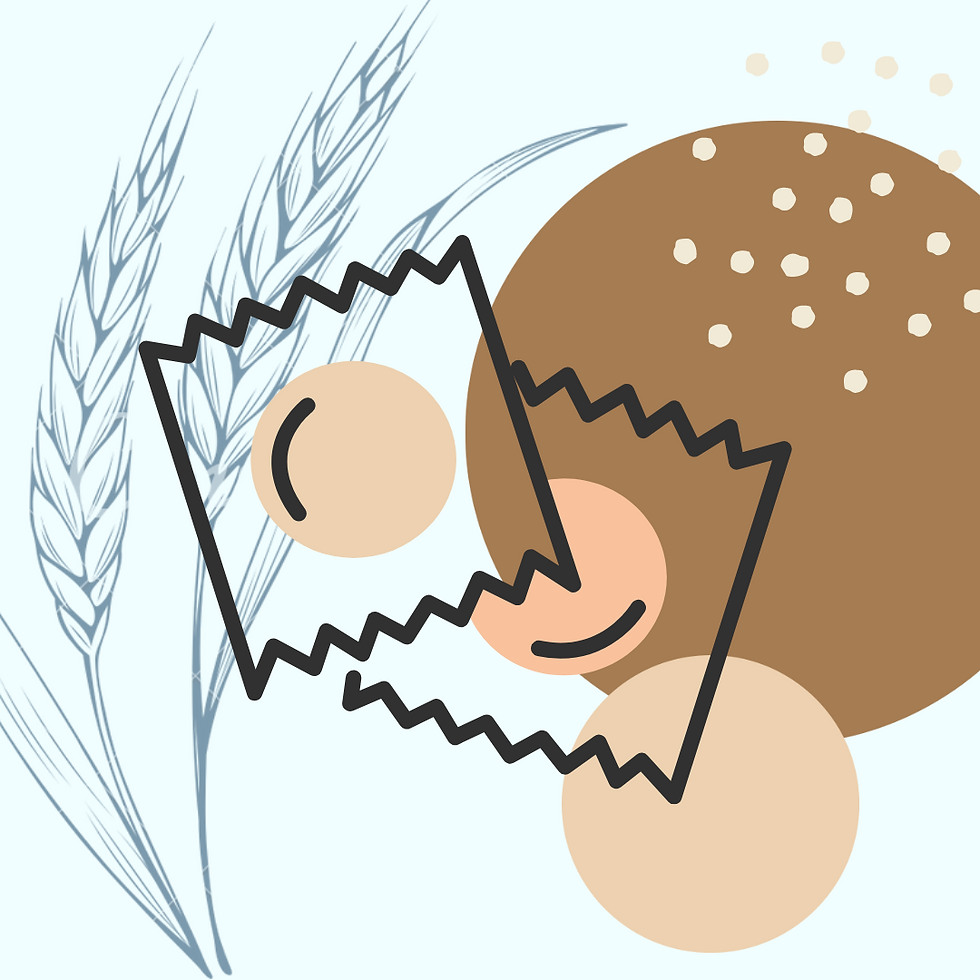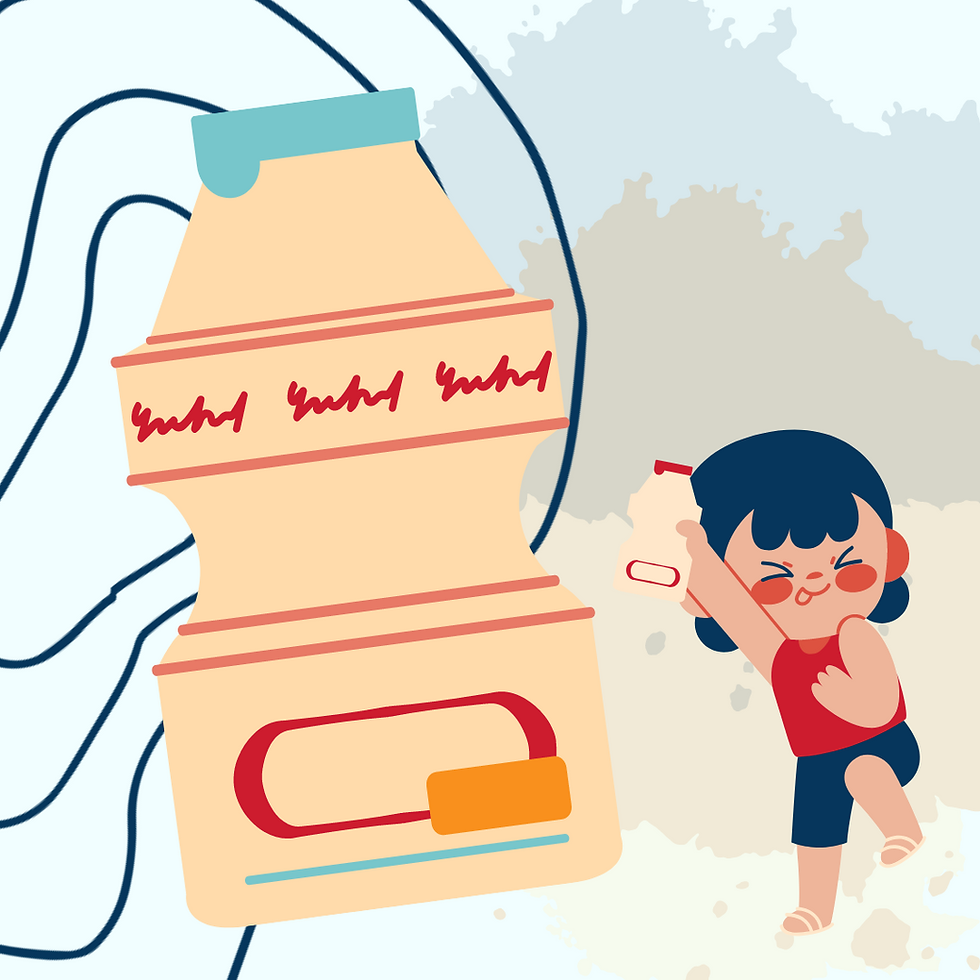Ingredients from Sour Patch Kids Candy
- traceorgan
- Mar 21, 2022
- 6 min read
Updated: Sep 2, 2022

Ingredients: Sugar, glucose syrup, modified corn starch, tartaric acid, citric acid, natural and artificial flavour, colour (with tartrazine)*
Sugar
Purpose
Sugar is used to make the candy sweet.
Health Benefits
Simple sugar is often known as glucose. sugar is broken down into glucose in our bodies for energy. Some glucose is essential for the brain, central nervous system, and blood cells to function (1).
Potential Health Risks
We can digest some sugar without health risks, however, too much sugar can cause heart disease, however, added sugar can cause heart disease, obesity or weight gain, increase the probability of chronic inflammation, and makes the liver synthesize more “bad” LDL cholesterol while lowering ”good” HDL cholesterol (2). Inflammation may cause fatigue, fever, mouth sores, rashes, abdominal pain, and chest pain (3). Chronic inflammation can also contribute to heart disease, diabetes and cancer (3). There is also a direct connection between sugar intake and increased blood pressure (3).
Recommendation:
Added sugars are not needed for people, but if someone wants to include some in their diets, the highest daily recommended intake of added sugars is approximately 25 grams for women and 37.5 grams for men. It is better to consume naturally occurring sugars from fruits, vegetables and whole grains, and overall consume less sugar while making sure we don’t go over the maximum recommended daily intake, in order to avoid any problems caused by overconsumption.
Glucose Syrup
Purpose
Glucose syrup is used as an artificial sweetener or shelf life enhancer in food products (5). 10% to 43% of glucose syrup is made from glucose, and although glucose syrup is very similar to glucose, it can have some differences (5).
Health Benefits
Glucose syrup does not offer any health benefits.
Potential Health Risks
This artificial sweetener is quite unhealthy with significant disadvantages. A tablespoon may consist of 62 calories and 17 grams of carbohydrates in the form of sugar, which is approximately four times more than regular table sugar (5). Obesity, high blood sugar, poor dental health, high blood pressure and heart disease can occur if one is not cautious (5). On the other hand, glucose will not always harm the body if glucose levels are regulated and one does not have health conditions, such as diabetes, which may impose more harm (5). Some side effects of glucose if consumed irresponsibly include neuropathy (nerve damage), heart disease, blindness, skin infections, problems in the joints and extremities, (especially the feet), severe dehydration, coma, diabetic ketoacidosis, and hyperglycemic hyperosmolar syndrome (5).
Recommendation
Glucose syrup is very unhealthy. It is similar to sugar, however, health effects are much more harmful. Glucose sugar should be avoided and other natural and healthier sweeteners (such as honey and maple syrup) should be consumed instead. Although a small amount of glucose syrup can be tolerated, it is not recommended.
Modified Corn Starch
Purpose
Modified corn starch is a food additive that is used as a thickening agent (6) and more. It can also change the texture of the candy, or manipulate gelatinization time (formation of candy) (6).
Health Benefits
There is no current evidence that modified corn starch is harmful as an ingredient other than increase calories without adding any nutritional value.
Potential Health Risks:
It may increase calories without adding any nutritional value (6). As mentioned, modified corn starch does not harm the body in any way; it is merely an additive used to enhance the quality of the food product; however, modified corn starch is most common in unhealthy, processed foods, which may present more hazards. Generally speaking, modified corn starch will not cause any harm (6).
Recommendation
As modified corn starch does not harm you in any way, there is no recommended amount. As well as that, modified corn starch is not essential to the body in any way, therefore, there is no recommended minimum or maximum suggestion for consumption. Although it would add calories (the body breaks it down into an energy source like other simple carbohydrates).
Tartaric Acid
Purpose
Tartaric acid gives the sour taste found in Sour Patch Kids candy and many other sour candies.
Health Benefits
Tartaric acid does not benefit the body significantly. Consult your pharmacist or physician for more information.
Potential Health Risks
Over-consuming tartaric acid may cause increased thirst, vomiting, irritability, gastrointestinal inflammation, diarrhea and abdominal pain (7). Consult your pharmacist or physician for more information (8).
Recommendation
The established acceptable daily intake for tartaric acid is 30 mg/kg of body weight per day (9).
Citric Acid
Purpose
Citric acid is naturally found in many fruits, especially limes and lemons, and it is what gives fruits a sour taste (8). Artificial citric acid is usually found in products such as candy and cleaning agents (8). It is used for flavouring and also acts as a preservative (8). Citric acid is one of the most common food additives used in the food industry.
Health Benefits
Citric acid helps metabolize energy, absorb nutrients and protect against kidney stones (8).
Potential Health Risks
According to the FDA, citric acid is considered a safe food additive; however, there have been reports from PubMed Central showing side effects such as joint pain with swelling and stiffness, muscular and stomach pain and shortness of breath, although these symptoms have only been observed in individuals who have consumed artificial citric acid (8). The natural citric acid found in products, such as lemons, does not cause these side effects, but these reports have not been confirmed and further studies are required (8).
Recommendation
As citric acid does not negatively affect the body according to the FDA, there is no limitation or recommended amount for consumption (8, 9). However, unbalanced and excessive amounts of artificial citric acid may cause health risks.
Natural and Artificial Flavour
Purpose
Both artificial and natural flavours contain chemicals that are used for flavouring in the candy (10). The distinction between natural and artificial flavourings is the source of the chemicals (10). Natural flavours are created from materials that can be found naturally (i.e. animals, pits of fruit), even if those edible products are processed in the lab to create flavourings, while artificial flavours come from materials that are inedible when raw (i.e. petroleum), but it is processed to create chemicals of flavouring (11). Many people believe that natural flavours are always healthier than artificial flavours; however, this is not the case.
Health Benefits
Flavours, whether natural or artificial, do not add nutritional value to the food, and they do not contribute to significant health benefits through vitamins, minerals, and fibre (10).
Potential Health Risks
As manufacturers do not disclose any information regarding what natural and artificial flavours entail, we cannot make any claims. Although individual reactions if on has allergies or is on a special diet.
Recommendation:
Although natural and artificial flavourings meet safety criteria, individual reactions and health issues may occur (10). People with allergies or on special diets should be very cautious about consuming them.
Colour (with Tartrazine)
Purpose
Tartrazine is a commonly used colour all over the world, mainly used to produce yellow and shades of blue and green (13). Products containing tartrazine commonly include processed commercial foods that have an artificial yellow or green colour (13).
Health Benefits
Tartrazine or yellow 5 offers no health benefits (13).
Potential Health Risks:
The FDA concludes that there is no threat to this ingredient, in connection to the dosage in the candy; however, overconsumption of this ingredient may cause damage to cells over time (12).
Recommendation:
As the amount of this ingredient is low on the list, you would need to consume a lot of Sour Patch Kids over a long time to cause damage. There is no harm in this ingredient as the dosage is low in this food.
Overview: Limit Consumption
Sour Patch Kids candy is quite unhealthy; however, like other unhealthy foods, it should not do much harm when consumed occasionally and in balance with whole foods. Nonetheless, this candy does not significantly benefit the body. Ideally, consumers should minimize consumption of the amount of Sour Patch Kid and other candies like it as much as possible.
References
Luo, E. K. (2017, March 24). What Is Glucose and What Does It Do? Healthline. https://www.healthline.com/health/glucose.
Why a Sweet Tooth Spells Trouble for Your Heart. (2017, April 6). Cleveland Clinic. https://health.clevelandclinic.org/sweet-tooth-spells-trouble-heart/.
Harvard Health Publishing. (2019, November 5). The sweet danger of sugar. Harvard Medical School. https://www.health.harvard.edu/heart-health/the-sweet-danger-of-sugar.
Olsen, N. (2020, August 19). 8 Big Lies About Sugar We Should Unlearn. Healthline. https://www.healthline.com/health/food-nutrition/sugar-facts-scientific.
Panoff, L. (2019, August 14). Glucose Syrup: Uses, Downsides, and More 14 Aug. 2019, Healthline. https://www.healthline.com/nutrition/glucose-syrup.
Sager, J. (2010, April 4). Is Modified Corn Starch Bad For You? CafeMom.com. https://cafemom.com/lifestyle/100756-is_modified_corn_starch_bad.
Magnesium-Tartaric Acid-Rhubarb Oral. (n.d.). WebMD. https://www.webmd.com/drugs/2/drug-77191/magnesium-tartaric-acid-rhubarb-oral/details/list-sideeffects.
Van De Walle, G. (2019, February 15). What Is Citric Acid, and Is It Bad for You? Healthline. https://www.healthline.com/nutrition/citric-acid.
What is the edible amount of citric acid per day and the concentration of citric acid in food that can be eaten? (April 20, 2016). Researchgate. https://www.researchgate.net/post/What_is_the_edible_amount_of_citric_acid_per_day_and_concentration_of_citric_acid_in_food_that_can_be_eaten. Accessed 2 Nov. 2020.
Spritzler, F. (2016, December 16). Natural Flavors: Should You Eat Them? Healthline. https://www.healthline.com/nutrition/natural-flavors.
Thomas, L. (2018, November 14). Are Artificial Food Flavors and Colorings Harmful? News-Medical.net. https://www.news-medical.net/health/Are-Artificial-Food-Flavors-and-Colorings-Harmful.aspx.
Tartrazine - an overview. (n.d.). ScienceDirect. https://www.sciencedirect.com/topics/agricultural-and-biological-sciences/tartrazine.
Marengo, K. (2019, July 25). What You Need to Know About Yellow No. 5. Healthline. https://www.healthline.com/health/yellow-5.
Credits:
Researcher: Ronak Patel, Skandha. R
Reviewed by: Karen Giesbrecht (Registered Dietitian)
Editor: Tanya
Graphics: Ali. S
Last updated on March 21st, 2022, 5:27 PM PST/PDT
*Disclaimer: Ingredients may vary from company to company and product to product. The information included is for educational purposes only and is not intended to be a substitute for medical treatment by a healthcare professional. Because of unique individual needs, please consult a registered dietitian for nutrition recommendations that are customized for you.
.png)




Comments